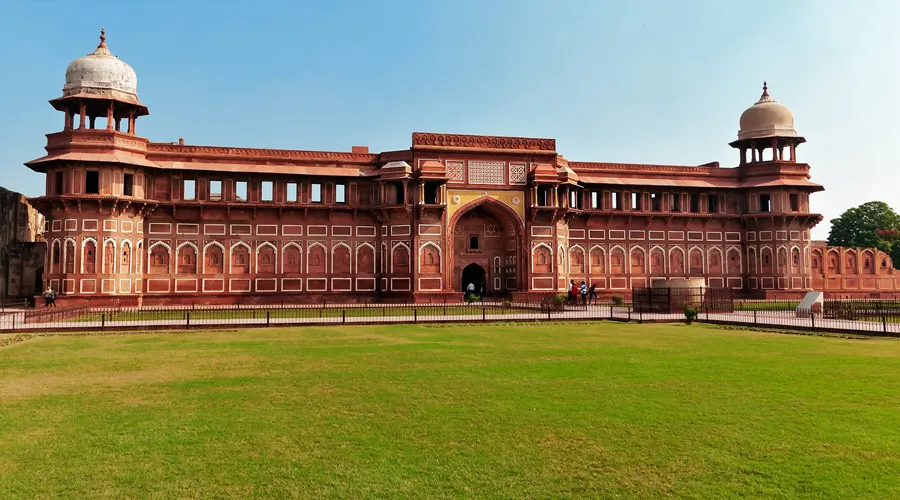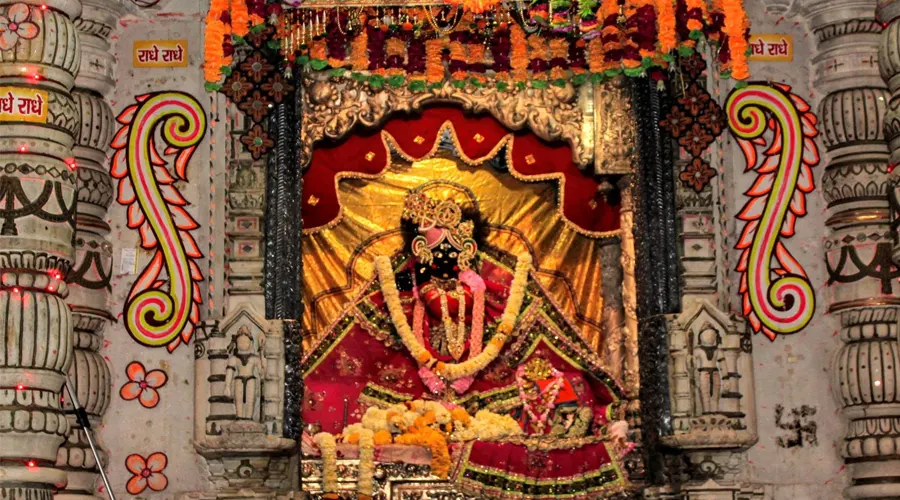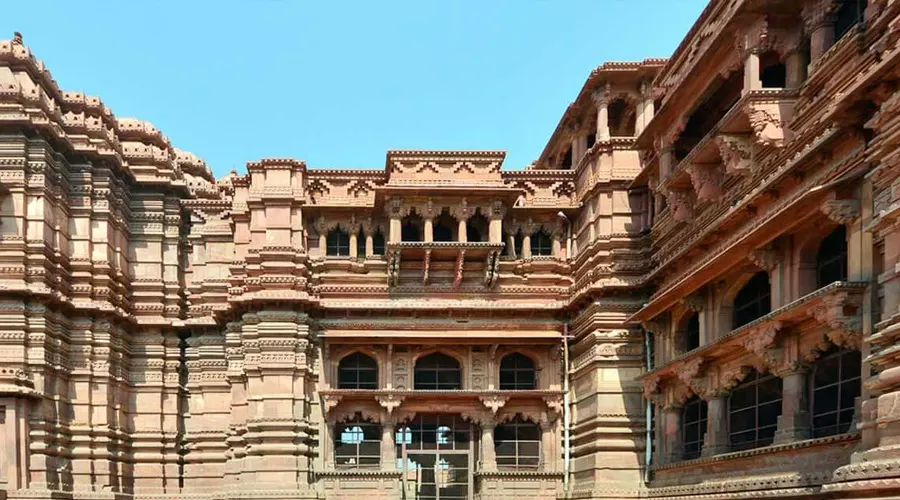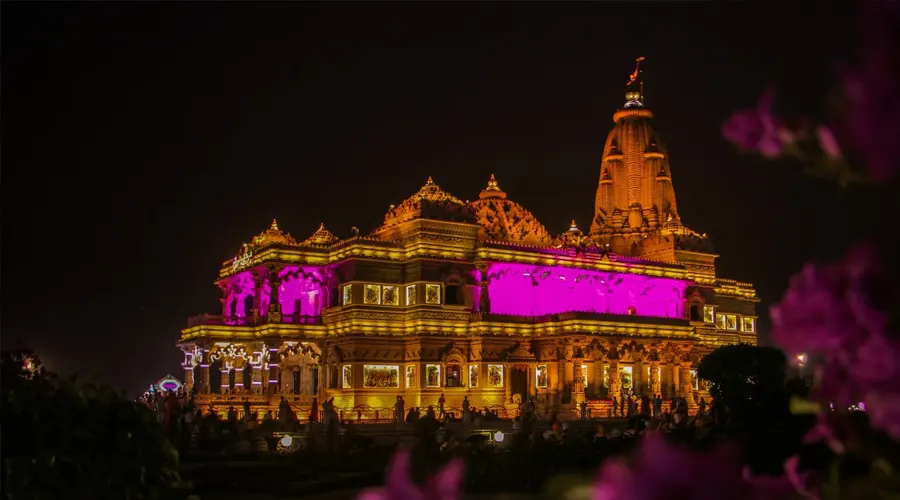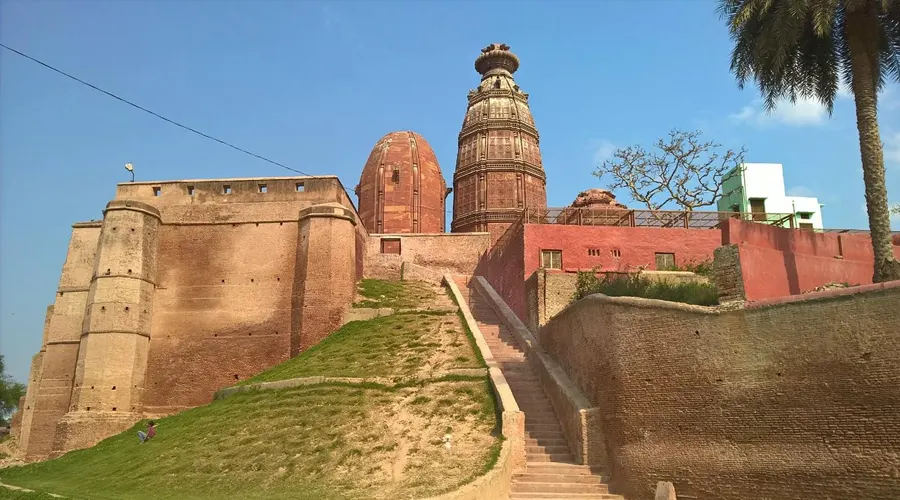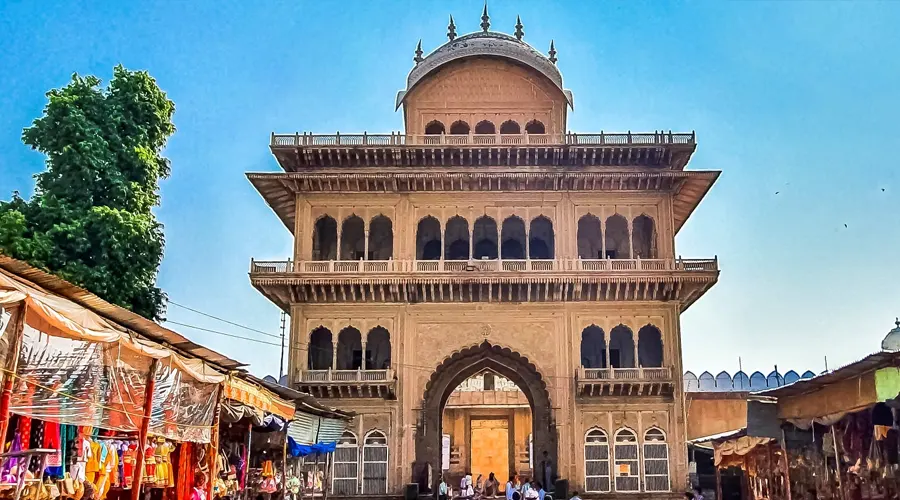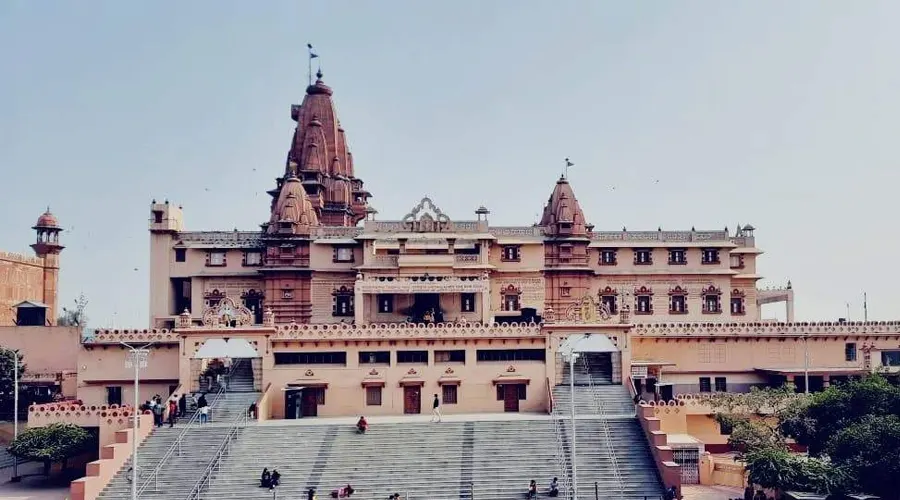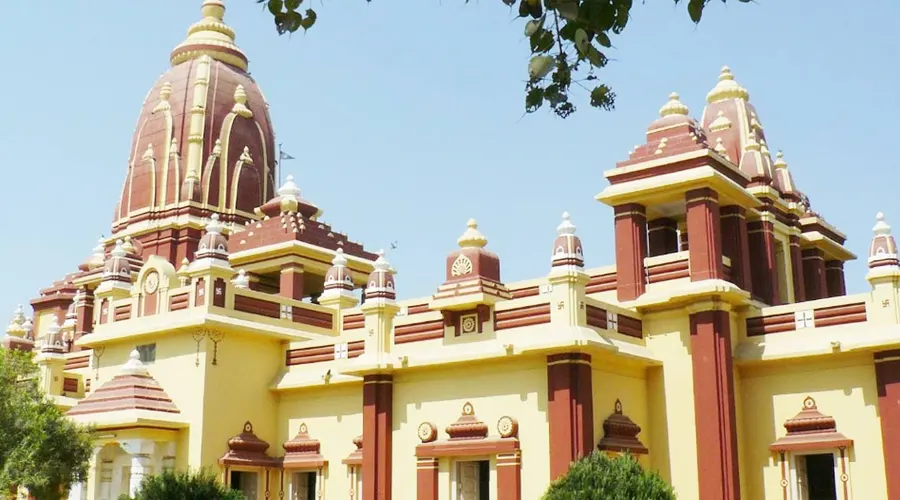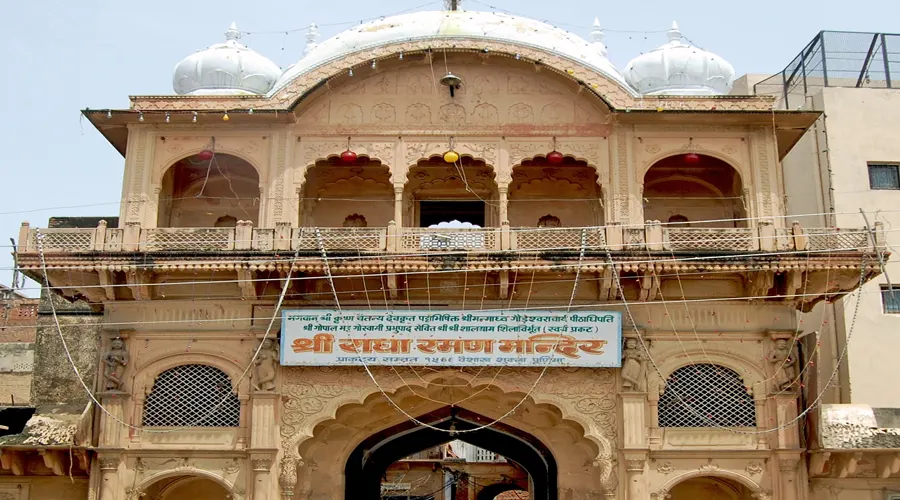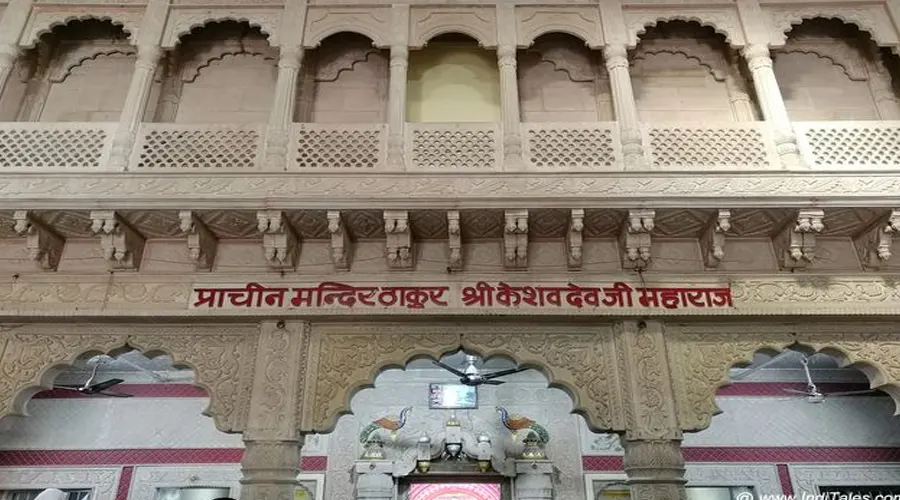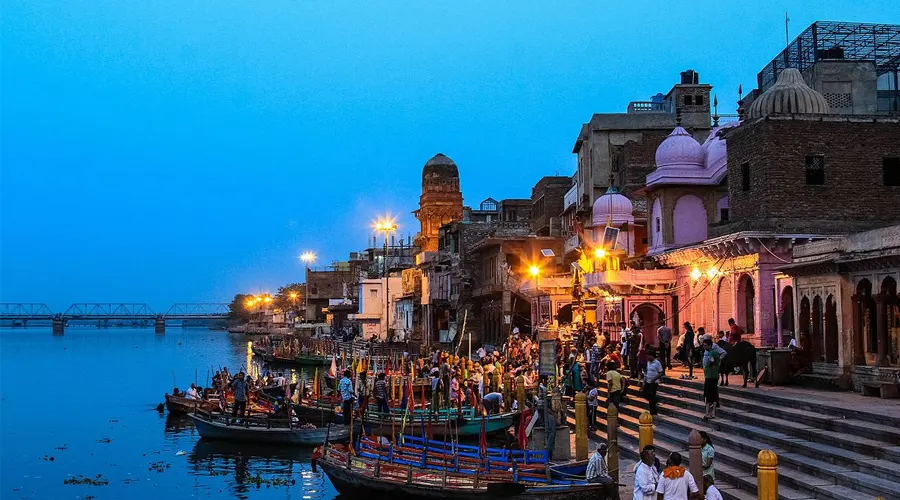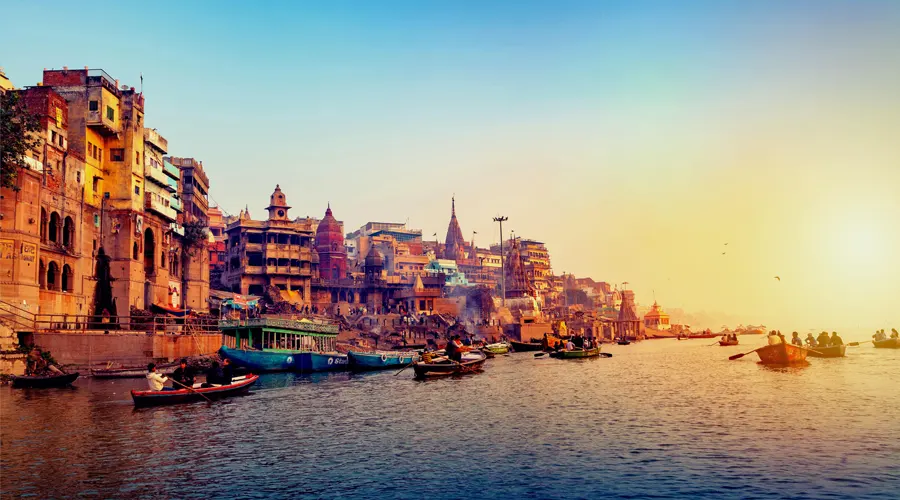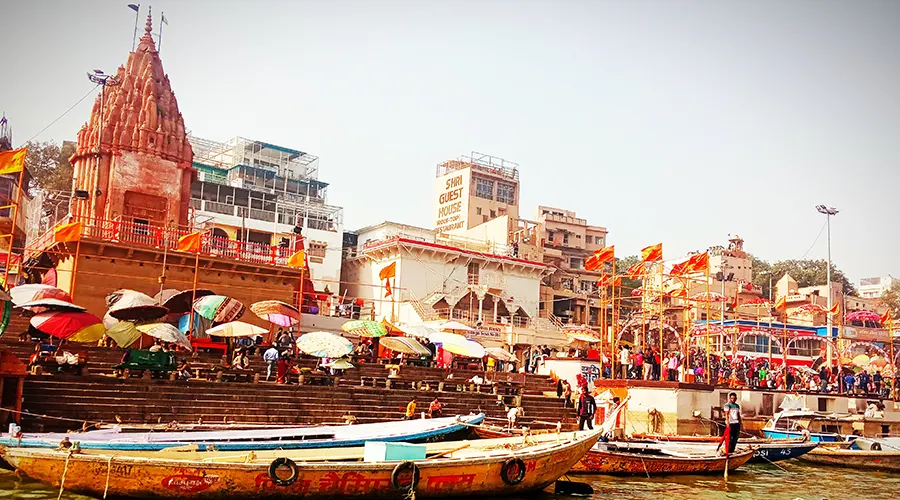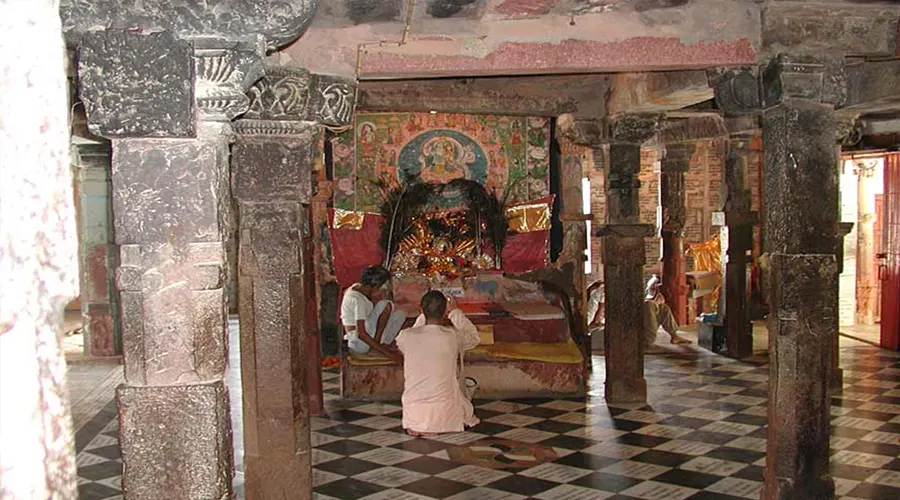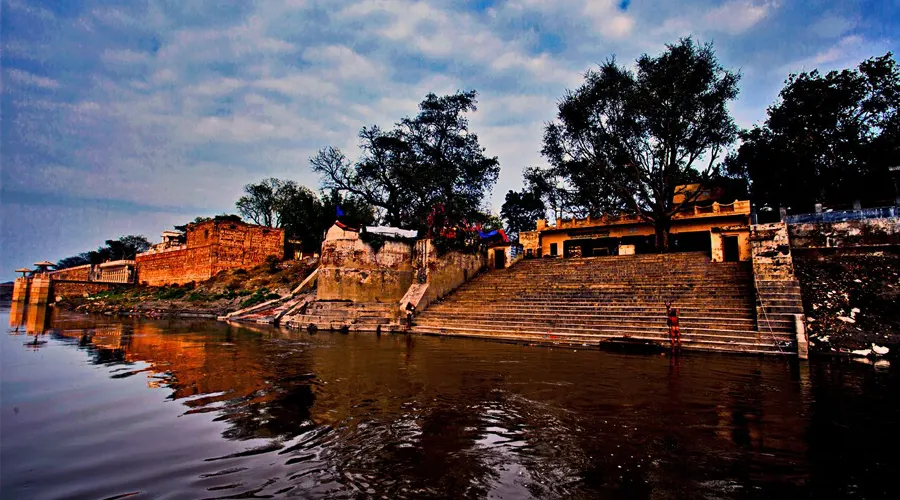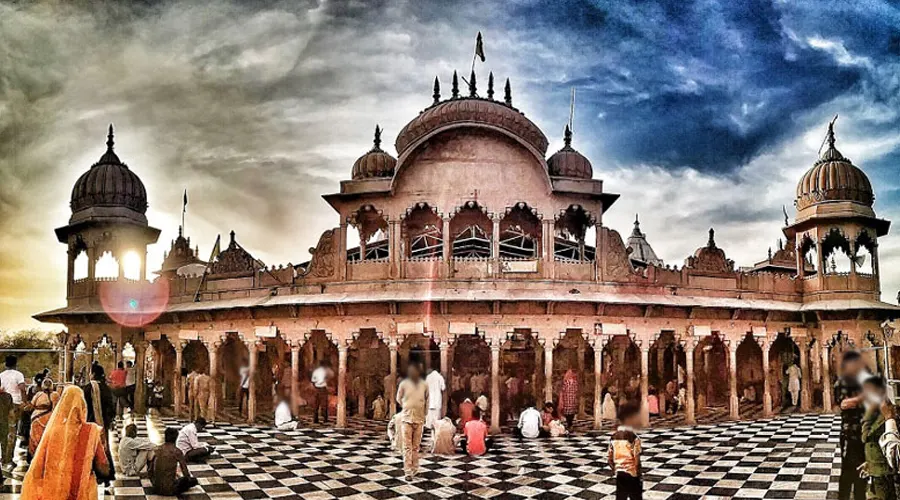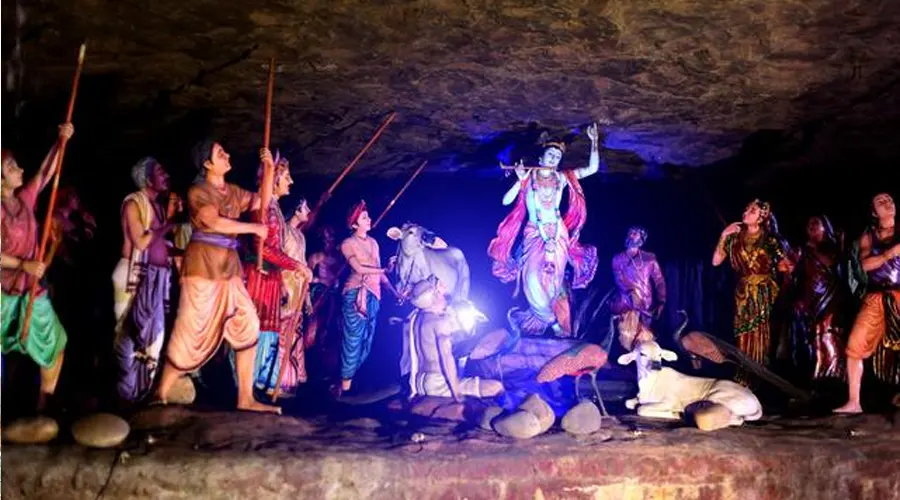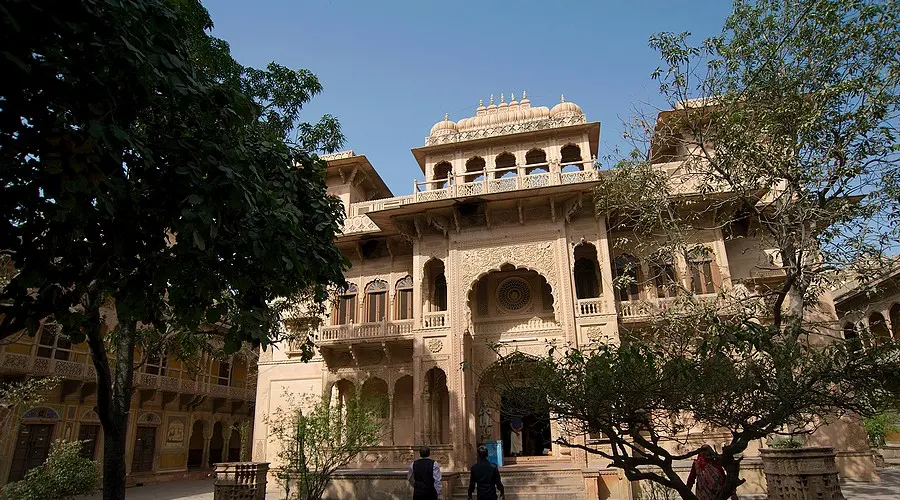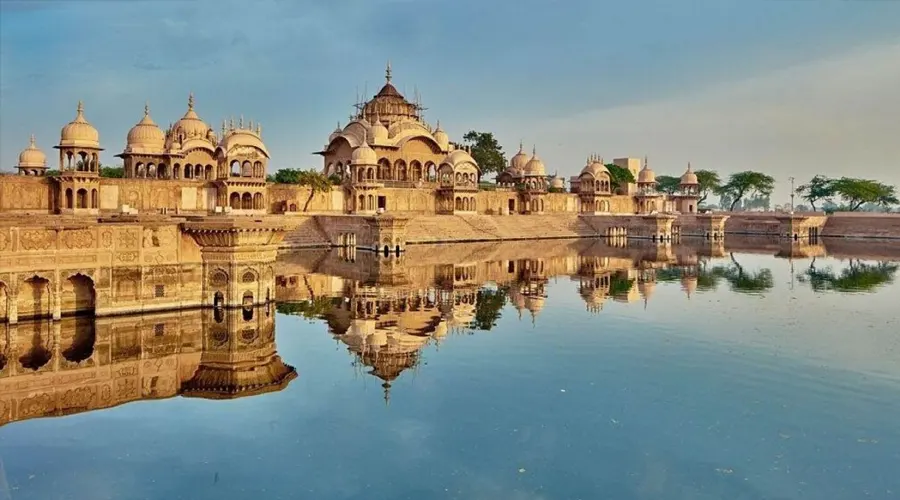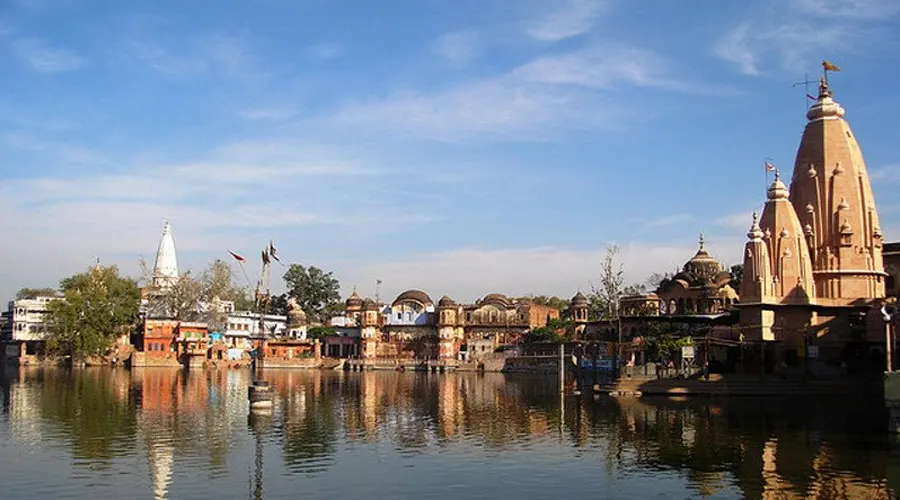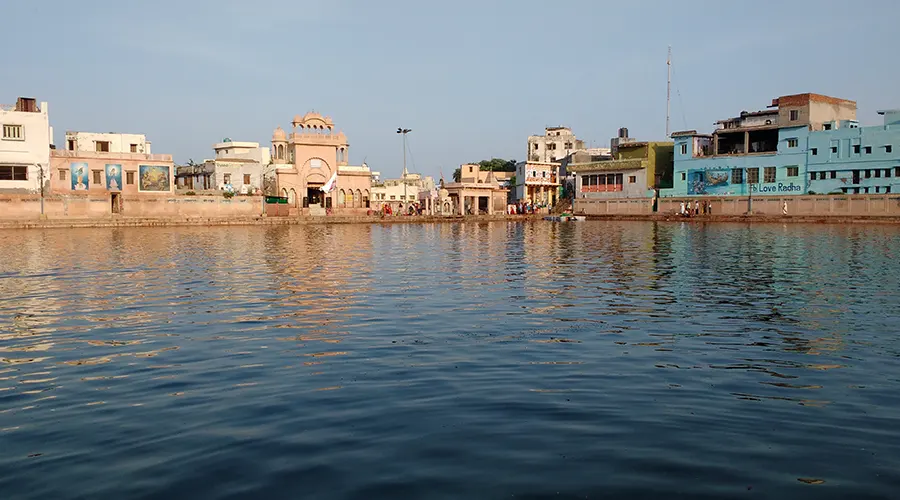Agra Fort
Agra Fort, as we know it today, is a colossal masterpiece built by the most popular Mughal Emperor, Akbar in 1565 AD, followed by Shah Jahan. Before Akbar, the fort served as a residence of Babur, while Humayun was crowned as an emperor in it. It is one of the three UNESCO World Heritage Sites in Agra, apart from the Taj Mahal and Fatehpur Sikri. This splendid monument is also known as Lal Qila and Qila-I-Akbari because it is built out of red sandstone. Inside the fort, you come across several buildings that embody aesthetic perfection and magnificence. No heritage tour to UP is complete without visiting the Agra Fort.
Indeed, the structure, layout, and design of the fort suggest an empire at the height of its glory and fame. This massive structure, which brilliantly combines aesthetics with size, served as the capital of the Mughal Empire till 1638, when it was finally shifted to Delhi. Although the fort was commissioned by Akbar and constructed under his supervision, later additions were made to it by Shah Jahan (who was an admirer of grand structures) and Jahangir.
Some of the magnificent buildings which captivate the onlookers inside the fort are, Diwan-i-Aam and Diwan-i-Khas (two audience halls), Nagina Masjid, Akbar’s Mahal, Bengali Mahal, Khaas Mahal, and Jahangir’s Palace. It is not until you begin exploring this enormous structure that you realize its importance, both historically and culturally. Just like most other architectural masterpieces, there is a legend associated with this structure too. It is believed that the royal rooms of the fort were first made hollow and then filled with water to enable them to remain cool even during summer. It was also a cruel twist of fate that one of the buildings in the Agra Fort built by Shah Jahan, the Musamman Burj, later served as his prison after he was deposed by his son, Aurangzeb.
History of Agra Fort
Situated just 3 km from the Taj Mahal, the Agra Fort was built on the banks of Yamuna as a defense to keep the enemy forces at bay. The rampart is 20 meters high and its walls are 2.5 km wide. The fort is a walled city comprising several structures which were demolished by various rulers only to be replaced by new preferences. The fort consists of four gates and the two main gates are the Delhi Gate and the Lahore gate. The Delhi gate was exclusively meant for Akbar and his security. It is now under the control of the Indian Army. The Lahore Gate is now known as the Amar Singh gate and is the only gate for entrance to the Agra Fort.
Agra Fort has had many invaders and seen the rule of many dynasties resulting in its constant transformations. Babur took the control of the fort after defeating Ibrahim Lodi in 1526. The fort was now home to the Mughal supremacy and an object of envy for the rest. Sher Shah Suri in 1540 defeated Humayun and the new owner of the fort made changes to it to suit his tastes. Fifteen years later in 1555, Humayun usurped the Sur rulers and reclaimed the fort only to lose it again a year later. But soon Akbar waged a war against the Surs and was able to take control of the fort once again. By this time the fort started to lose its sheen and in 1556 Akbar rebuilt the entire fort with red sandstone. After the death of Shah Jahan, the fort was captured by the Maratha rulers who lost it to the British and was later handed over to the Indian government post Independence.
Architecture of Agra Fort
The fort has two halls: Diwan-i-Am, where Shah Jahan used to address the public, and Diwan-i-Khas - meant for discussion of foreign matters with the emissaries. Near to Diwan-i-Khas lies the Nagina Masjid - the chamber for the royal women. Diwan-i-Khas was once famous for the iconic peacock throne of Shah Jahan which was placed in the center engraved with exquisite gems and stones and also had the enviable diamond, the Kohinoor. The fort also houses the throne of Jehangir called the Takhti-i-Jehangir. One of the most interesting structures at the fort is the Shish Mahal made of multiple mirrors ordered from Syria. The mirror palace reflects the light because of its design. To the east is the Mausamman Burj in Khas Mahal, the white-marbled tower where Shah Jahan was confined during the final eight years of his life until he breathed his last in 1666. It is from the balcony of this place where he would admire the views of the Taj Mahal. No Mughal structure is complete without a well-trimmed garden and the same goes for the Agra Fort. Anguri Bagh is the garden here which was later restored and is maintained well even today.
Magnificent Structures Inside Agra Fort
1. Jehangir Mahal: One of the first architectures that you will encounter once you enter the Agra Fort through the Amar Singh Gate is the Jehangir Mahal. Jehangir was Akbar's son and the next in line to rule the Mughal empire after his father. The Jehangir Mahal was built by Akbar as a women's quarters and was constructed adjacent to the chambers of his favorite queen Jodha Bai. Simple in its design, the Jehangir Mahal is built in stone and has Persian verses carved out beautifully in a large stone bowl used for storing rose water.
2. Khas Mahal: Another important structure in the Agra Fort is the Khas Mahal, which has some classical Persian and Islamic influences with a touch of Hindu motifs in its construction. It was the emperor's sleeping chambers or 'Araamgah'. Its unique feature is its beautiful paintings on the marble surface.
3. Musamman Burj: Towards the left of the Khas Mahal lies the Musamman Burj, which was also built by Shah Jahan. Octagonal in shape, this tower has an open pavilion which allowed the cool evening breeze to flow right through it. This was the place where Shah Jahan spent his last days whilst he looked out over the tomb of his beloved wife, the Taj Mahal.
4. Sheesh Mahal: One of the most exquisite constructions in the Agra Fort, the Sheesh Mahal is a 'harem' or dressing room that employs the most sophisticated water engineering designs. The inside of this construction is beautifully decorated with a mosaic of myriad tiny mirrors, hence giving it its name.
5. Diwan - I- Khaas: To the right of the Sheesh Mahal lies the Diwan - I - Khaas, which was a hall, especially for private audiences. It is intricately decorated with marble pillars that are studded with floral patterns of semi-precious stones. Adjacent to this is the Mammam-E-Shahi or the Shah Burj, used as the summer retreat.
6. Diwan - E - Am: This was the hall that was open to the general public. It was here that the very famous Peacock Throne was situated, and the room where the throne once used to be is richly decorated with white marble.
7. Nagina Masjid: This shrine was built by emperor Shah Jahan as a private mosque for the ladies of the court.
8. Moti Masjid: Also known as the Pearl Mosque, it is an extremely beautiful structure situated at Agra Fort. The building of the mosque is closed to visitors as of now. Near the Moti Masjid lies the Mina Masjid, which was the private shrine of Emperor Shah Jahan.

